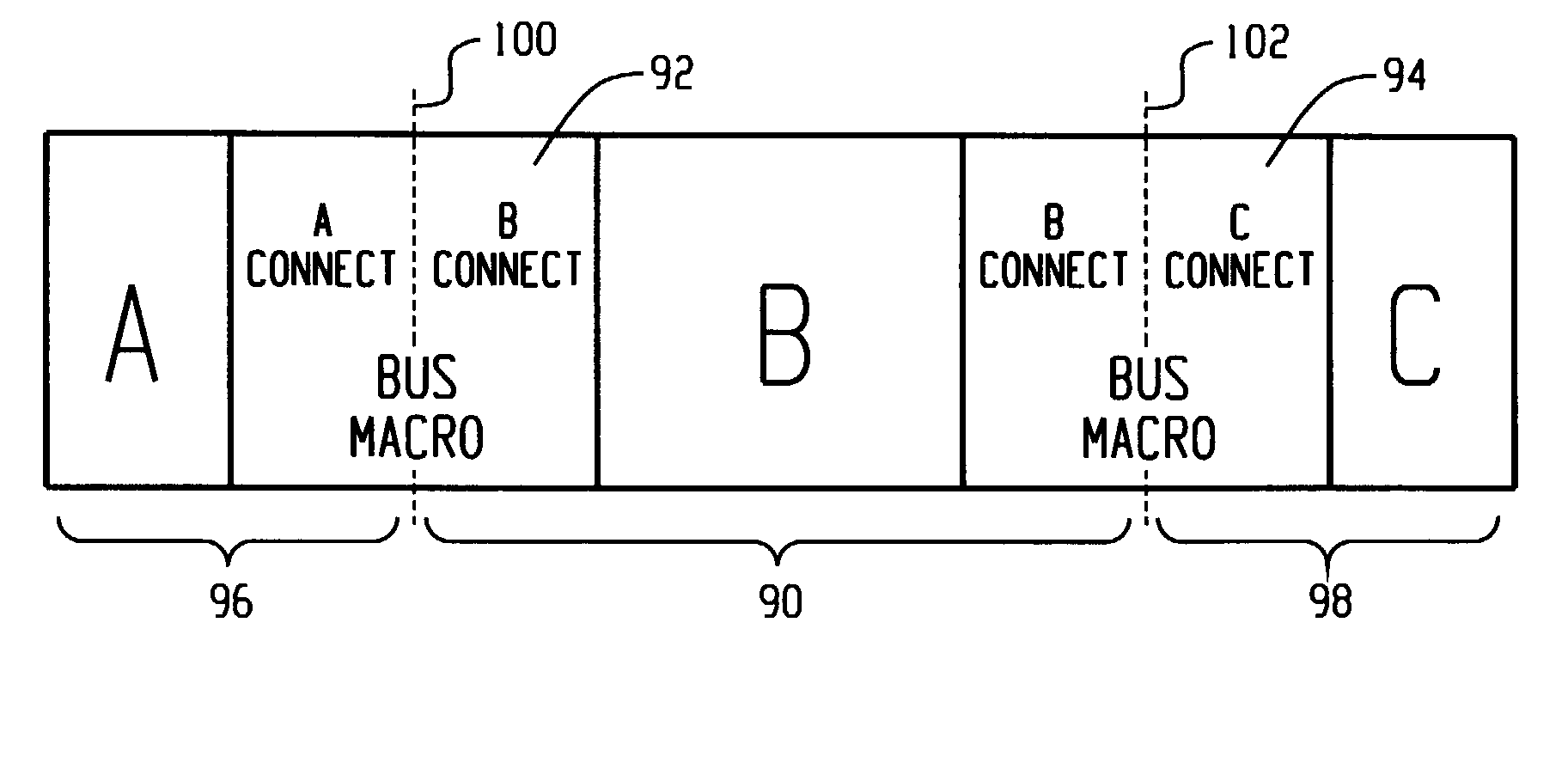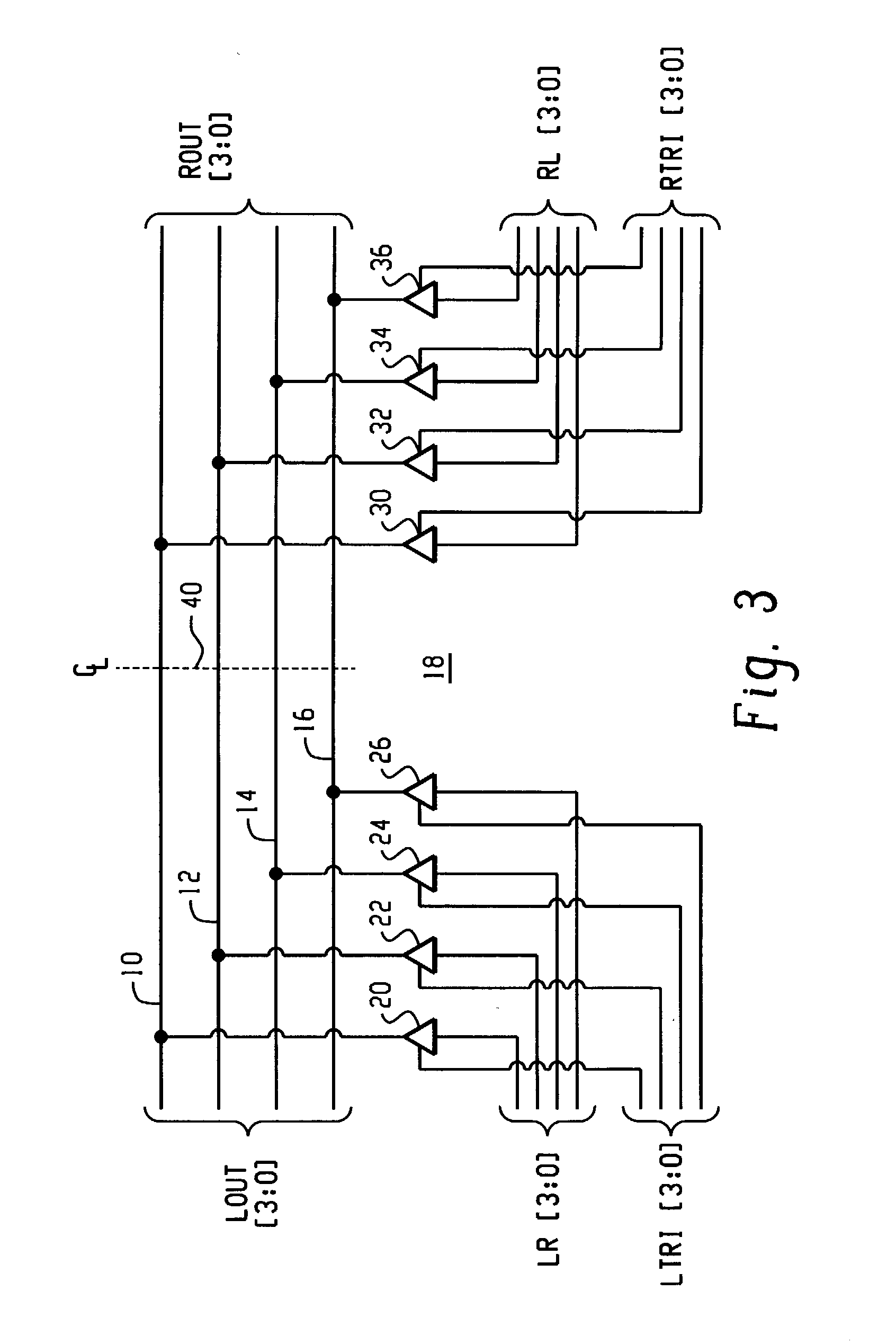Partial reconfiguration of a programmable gate array using a bus macro
a programmable gate array and macro technology, applied in the field of bus macro, can solve the problems of not being able to fully implement partial reconfiguration for all cases, and being difficult to program, and affecting the implementation of partial reconfiguration
- Summary
- Abstract
- Description
- Claims
- Application Information
AI Technical Summary
Problems solved by technology
Method used
Image
Examples
Embodiment Construction
/ ********************************************************* \***Module : designA.v****Description : Design using Bus Macro instantiation.**Design is intended to be placed and routed on the left**half of a Xilinx Virtex V50 device.****The basic function of A allows a 4-bit incrementer**to be either loaded from off-chip, loaded from the**B (right-side) design, or simply incremented.***\ ********************************************************* / ‘timescale lns / 10psmodule designA (clockA_in, loadA, loadB, triA, data_inA,data_outA);input clockA_in, loadA, loadB, triA;input [3:0] data_inA;output [3:0] data_outA;wire [3:0] tribusA;wire clockA_buf;wire [3:0] data_inB, tribusB;wire [3:0] data_outB;reg [3:0] counter;assign tribusA = { triA, triA, triA, triA };assign data_inB = 4'b1111;assign tribusB = 4′b1111;IBUFG ibufgA (.I(clockA_in), .O(clockA_buf));BUFG bufgA (.I(clockA_buf), .O(clockA));always @(posedge clockA)if (loadA) counter else if (loadB) counter else counter busmacro bus4bit (...
PUM
 Login to View More
Login to View More Abstract
Description
Claims
Application Information
 Login to View More
Login to View More - R&D
- Intellectual Property
- Life Sciences
- Materials
- Tech Scout
- Unparalleled Data Quality
- Higher Quality Content
- 60% Fewer Hallucinations
Browse by: Latest US Patents, China's latest patents, Technical Efficacy Thesaurus, Application Domain, Technology Topic, Popular Technical Reports.
© 2025 PatSnap. All rights reserved.Legal|Privacy policy|Modern Slavery Act Transparency Statement|Sitemap|About US| Contact US: help@patsnap.com



